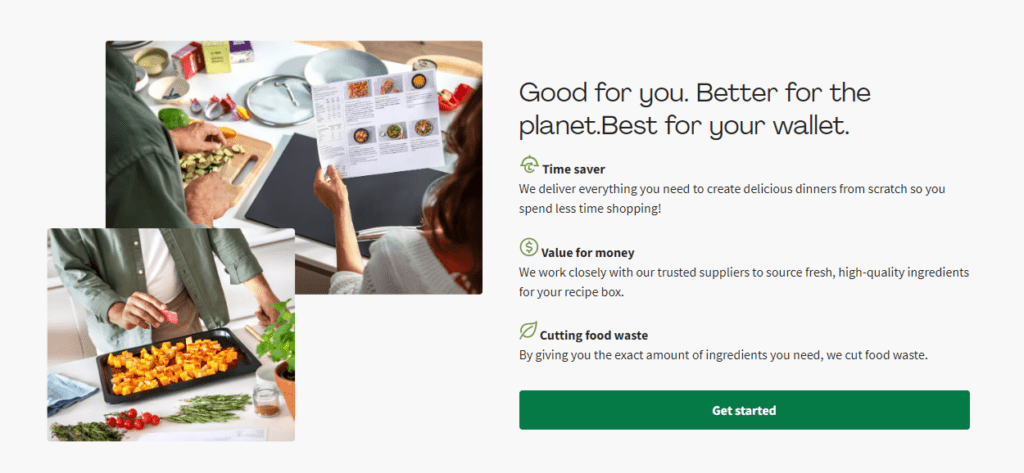What is conversion copy?
Conversion copy is copy that’s designed to encourage users to take a specific action right there and then, i.e. to convert. For e-commerce sites, this action might be clicking a ‘buy now’ button or adding a product to an online shopping cart. However, conversion can also look like filling in an enquiry form or subscribing to a newsletter.
Because a conversion doesn’t have to be a purchase, you can use conversion copywriting throughout the stages of a user’s journey to help nurture them down the marketing funnel. Even if they enter your site at the awareness stage, conversion-focused copywriting can get them to evaluation or decision stage.
Conversion copy also goes hand in hand with SEO copywriting. SEO copywriting boosts your content’s ranking on Google and helps users find your page, whereas conversion copywriting keeps a user on that page and gets them to take action.
7 Ways to Master Conversion-Focused Copywriting
If you want your content to convert, your copy needs to be simple and persuasive, making it as easy as possible for the reader to perform a specific action. But that’s not all. From effective microcopy to consistent tone of voice, here are some things to bear in mind to boost your conversion copywriting:
Consider your metadata
Before you even think about your on-page content, you need to consider the metadata. Metadata is what search engines use to understand key information about a webpage, such as the kind of content and who it’s for, which then informs a page’s ranking. Getting your page to rank is not enough though – you also need to make sure users feel compelled to click through. This is where conversion copy comes in.
Use headings
Alongside your body copy, headings and subheadings (H2s, H3s, etc.) can be a great tool for creating compelling, conversion-focused copy.
If your content is laid out clearly, readers can easily find what they’re looking for, making them more likely to stay on the page and continue their journey. Readers should be able to get the jist of your content just by reading your subheadings.
Clarity is key
Conversion copy is all about making it as easy as possible for a user to complete an action. A good way to do this is to keep your body copy clear using simple language, varying sentence length and avoiding any jargon or industry terms.
This also means no waffle or filler – if you can say something in 20 words instead of 50, do!
Features tell, benefits sell
Whether writing a product description or a tour itinerary, it’s all too easy to list your product or service features and expect them to do the talking. By highlighting your offering’s benefits, you’ll make it clear how your product meets your users’ needs and addresses their pain points, encouraging them to convert.
Don’t forget tone of voice
Having an identifiable and consistent tone of voice throughout your on-page content can do wonders for your conversion rate.
As a refresher, tone of voice (ToV) is the way you communicate your brand values to your audience through your written content. Establishing and maintaining a clear ToV in your content is the first step in creating content that your audience resonates with and inspires action.
Nail your CTAs and microcopy
Speaking of calls to action, don’t neglect your microcopy.
While body copy is the place to tell a user why they should be doing something, microcopy is the place to tell them how. Without good microcopy, a user may want to convert but might not understand how and ultimately abandon their journey without clicking ‘buy now’ or ‘sign up’. Just like body copy, good, conversion-focused microcopy makes the user’s life simpler and makes it easy for users to take action.
Add social proof
It’s a given that conversion-focused copy should be built on persuasive language – things like using questions, urgency messaging and reader-focused copy. Including social proof is another easy way you can make your copy persuasive and drive conversions.
Try baking in user testimonials, including positive reviews or drawing on your social media content to showcase how people interact with your brand.
Excellent Conversion Copy Examples
To help put these tips into perspective, let’s take a look at a couple of examples of good conversion copywriting.

In this example from HelloFresh, conversion is clearly front of mind. Right from the heading, the page clearly lays out the benefits of using this service, showing the user how it’ll save them time and money. The copy also touches on environmental factors, showing a good understanding of their target audience. Finally, the CTA is clear and effective, making it as easy as possible for someone to start using the service.

This screenshot from Monzo’s landing page is a great example of a brand nailing conversion copy even when conversion doesn’t mean ‘buy now’. This short snippet combines simple language, clear and useful CTAs and social proof (referring to existing customers) to compel users to download their app in just 32 words. The brand’s tone of voice also clearly shines through, helping encourage their target audience to convert.
Concluding thoughts
When trying to get everyday users to convert to lifelong customers, many turn to traditional SEO to get their content in front of more users. However, having optimised content is only half the battle. Without conversion-focused on-page content, there’s a danger that users will just land on your site and then leave before taking any action.
Conversion copywriting is then the final piece of the puzzle in getting users to continue their journey through to conversion.
Need help nailing your conversion-focused copywriting? Get in touch with our strategic copy team to see how we can help.
